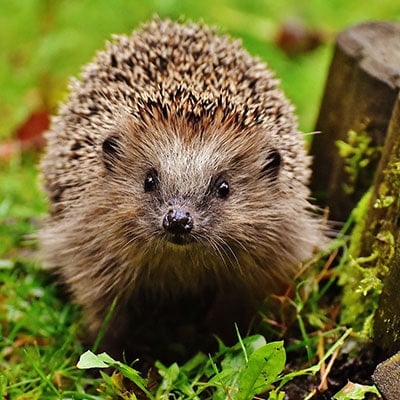
Robin Redbreast may be the best-known creature to live in our gardens during the winter months, but he’s not the only one.
Winter wildlife includes a host of birds, animals and insects who all rely on our finely manicured gardens to survive the colder months.
You can make the most of your garden so that you can see some wonderful winter wildlife and also do your bit to help keep them safe and well until the spring thaw comes.
Whether it’s providing food or ensuring that they have somewhere to hibernate or shelter from the cold, you can do something to help the animals that give you so much pleasure during the rest of the year.
What sorts of wildlife can be seen during a British winter?
Your garden definitely seems quieter when the nights start to draw in, but not all the birds have flown south for winter. Many birds who spend their summers further north come to Britain during the winter, and it’s a great opportunity to see some lesser-known species.
Ducks, geese and swans often migrate here in winter, including pintail, goldeneye and long-tailed ducks. Birdwatchers may also recognise red-breasted merganser and goosander. Not every winter bird is wildfowl, though – look out for redwings, fieldfares and waxwings.
For those who can’t fly, winter can be a big challenge. Amphibians like newts, frogs, and toads will still be around your garden pond, occasionally waking up on a warmer or sunnier day.
Gardeners in more rural areas may also see smaller mammals like foxes, badgers and even otters during the winter months.
So what can I do to help?
For your garden’s birds, the best and easiest thing to do is leave out a bird feeder. Bird feed generally includes high-calorie items like sunflower seeds, peanuts and even suet. If you have fruit trees, try to leave some of the fallen fruit and also make sure the bird bath is full.
Amphibians often sleep at the bottom of your pond, or occasionally in a compost heap. So be careful when turning the compost to make sure you don’t accidentally skewer a slumbering toad.
The other important thing to do is to ensure your pond doesn’t freeze over completely. The layer of ice prevents oxygen getting into the water and sleeping frogs can suffocate.
You don’t need to break up the ice every day, though – just leave a tennis ball floating as that will prevent all but the most serious frosts.
Hibernation alert
Don’t forget the hibernating creatures either. Hedgehogs are particularly vulnerable - only half survive their first winter. Milder weather can trick them into waking up early, believing that spring is already here.
Their fruitless hunts for food waste valuable energy and some that go back into hibernation don’t survive the rest of winter. In the Autumn, you should leave a water dish and some cat food out if you have a hedgehog in your garden to help it fatten up.
After that, they tend to hibernate in piles of leaves so make sure you don’t light any bonfires unless they are freshly made that day. The British Hedgehog Preservation Society has reams of information about helping the little furzepigs – the old English name for hedgehogs.
Insects also go into hibernation, and we all know how important they are for the good health of your garden – yes, even wasps. They, along with ladybirds and lacewings, like to shelter under loose pieces of bark or wooden doors and frames.
Bumblebees bed down after digging holes in the ground while butterflies like garages and sheds.
You can help insects out by creating the sorts of hiding holes they like – tie up a bunch of sunflower stalks and leave them in a sunny spot.
Take a look at our handy winter survival guide
So not only are there many birds and animals that you can see in your garden over the winter months, there’s lots you can do to help. The things to remember are not to disturb hibernating creatures if you can help it while providing food sources and habitats for those that eke out the winter day by day.




